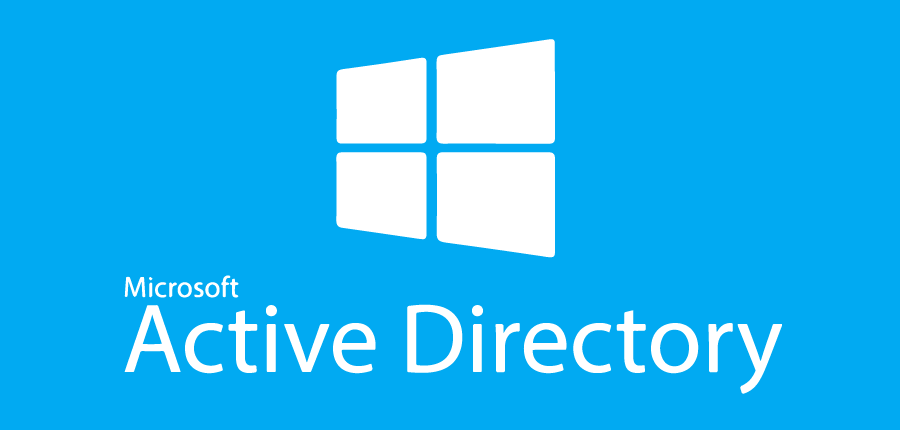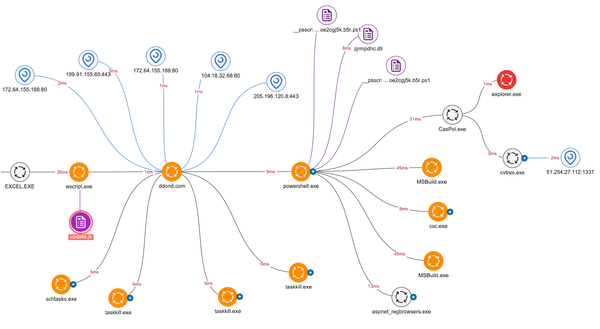Lateral Movement Detection in Active Directory Environments

Introduction
Welcome, cybersecurity professionals. Today we are delving into the world of lateral movement detection within an Active Directory (AD) environment, an essential topic for all those working within enterprise cybersecurity. This article will provide an in-depth analysis and understanding of lateral movement detection within an AD environment, its implications, and the best practices to effectively counter such threats. By understanding these concepts, we can strengthen our defense against advanced persistent threats (APTs) and targeted attacks. For a broader understanding of how attackers infiltrate networks, we recommend reading our article on advanced C2 infrastructure design.
Technical Background
To fully grasp the concept of lateral movement detection in an AD environment, we need to understand the underlying principles of Active Directory, lateral movement, and how these two elements intertwine.
Active Directory (AD) is a Microsoft technology used in corporate environments to manage computer systems and users. It provides a way of organizing, managing, and controlling access to network resources.
Lateral movement, on the other hand, refers to techniques used by attackers to progressively move through a network, seeking to gain higher-level privileges and access to high-value assets. This approach typically involves exploiting the interconnected nature of devices within a network - hence the term 'lateral movement'.
The intersection of AD and lateral movement comes into play as AD environments are common targets for lateral movement due to their centralized nature. A successful exploit can provide an attacker with access to a vast array of resources and data.
In terms of historical context, the importance of lateral movement detection has grown significantly over the years. As attackers continue to develop more sophisticated methods to infiltrate networks, the ability to detect lateral movement has become an essential tool in the cybersecurity arsenal. In-depth articles like this one from Microsoft's Security Documentation provide a more comprehensive view of the evolution of these threats.
Practical Implementation
Detecting lateral movement in an AD environment involves multiple steps and various techniques. The first step is to understand the normal activity within your network. This involves establishing a baseline of typical user behaviors and network traffic patterns. Unusual or suspicious activity can then be flagged for further investigation.
Next, we need to closely monitor privileged accounts and groups in the AD. Attackers often target these accounts due to the level of access they provide. Therefore, any unusual activity involving these accounts should be treated as a potential indicator of compromise.
Another effective technique is to monitor for the use of common tools and commands often used in lateral movement. This includes tools like PsExec, WMI, and PowerShell. These tools are often used by system administrators and are therefore legitimate tools within an environment. However, in the wrong hands, they can be used to carry out malicious activities. Thus, monitoring the use of these tools can help in detecting potential lateral movement.
For a more in-depth look at common tools used in attacks, consider reading Krebs on Security's investigations on various cyber attacks.
Code-wise, we can employ scripts to automate the scanning and monitoring process. For instance, Windows Event Logs provide a wealth of information that can help detect lateral movement. We can use a PowerShell script to pull relevant event logs and analyze them for signs of lateral movement.
```powershell # Gather security logs $logs = Get-EventLog -LogName Security -Newest 1000
Filter for potential lateral movement events $lateralEvents = $logs | Where-Object { $_.EventID -eq 4624 -and $_.Message -like "*Logon Type: 3*" }
Analyze and report $lateralEvents | ForEach-Object { Write-Output "Potential lateral movement detected: $($_.TimeGenerated) - $($_.Message)" } ```
In this script, we're specifically looking for Event ID 4624 with Logon Type 3, often associated with network logons and potentially indicative of lateral movement. However, remember that false positives can occur and each potential threat must be thoroughly investigated.
These methods form the basic foundation of detecting lateral movement within an AD environment. However, it's important to note that attackers are constantly evolving their methods, so continuous learning and adaptability are key in maintaining effective defenses.
Security Implications
Understanding the security implications of lateral movement in an Active Directory (AD) environment is crucial in managing the cybersecurity risks associated with these types of threats. Attackers often exploit the interconnected nature of AD environments to move laterally across an organization's network.
Attack Vectors
In an AD environment, an attacker who has successfully compromised a single device can use a variety of techniques to move laterally across the network. One common method involves using stolen credentials to authenticate to other systems on the network, exploiting the trust relationships that exist within the AD environment. Another common method involves the use of NTLM relay attacks, as detailed in our article on NTLM Relay Attacks: Understanding the Threat and How to Defend Against It.
Exploitation Techniques
Once an attacker has gained access to an initial system, they can use a variety of tools and techniques to move laterally. For example, an attacker might use a tool like PowerShell to execute commands on remote systems, or they might use a tool like Mimikatz to steal credentials from memory.
Real-World Examples
A real-world example of lateral movement can be found in the 2014 attack on Sony Pictures Entertainment. In this case, the attackers were able to move laterally across the network using stolen credentials, ultimately compromising a significant portion of Sony's network.
Detection and Prevention
Detecting and preventing lateral movement in an AD environment requires a comprehensive approach to cybersecurity. This includes both technical controls and operational practices.
Detection Methods
Monitoring for unusual patterns of behavior can help to detect potential lateral movement. For example, an unusually large number of failed login attempts might indicate an attacker attempting to brute force their way into an account. Security tools such as Intrusion Detection Systems (IDS) and Security Information and Event Management (SIEM) systems can help to automate this process.
Defensive Strategies
Defensive strategies for lateral movement typically involve limiting the potential for movement within the network. One method of achieving this is through network segmentation, which involves dividing the network into smaller, isolated segments. This can limit an attacker's ability to move laterally across the network.
Tools and Techniques
There are a variety of tools and techniques available to help detect and prevent lateral movement. For example, Microsoft's Advanced Threat Analytics (ATA) can help to detect suspicious activities in an AD environment. More information on these tools can be found in the Microsoft Security Documentation.
Advanced Topics
While the basics of detecting and preventing lateral movement in an AD environment are well-established, there are several advanced topics that are currently the subject of ongoing research.
Cutting-Edge Research
Researchers are currently investigating new methods of detecting lateral movement. For example, machine learning algorithms are being developed that can analyze patterns of behavior within a network and identify potential indicators of lateral movement.
Future Developments
As organizations continue to migrate to cloud-based infrastructures, the nature of lateral movement is likely to change. For example, an attacker who has compromised an AWS environment might use different techniques to move laterally than they would in a traditional AD environment. For more information on this topic, see our article on Advanced AWS Pentesting.
Conclusion
Detecting and preventing lateral movement in an Active Directory environment is a complex task that requires a comprehensive approach to cybersecurity. By understanding the techniques that attackers use to move laterally across a network, security professionals can better protect their organizations from these threats. For additional resources on this topic, see our article on Advanced C2 Infrastructure Design.




